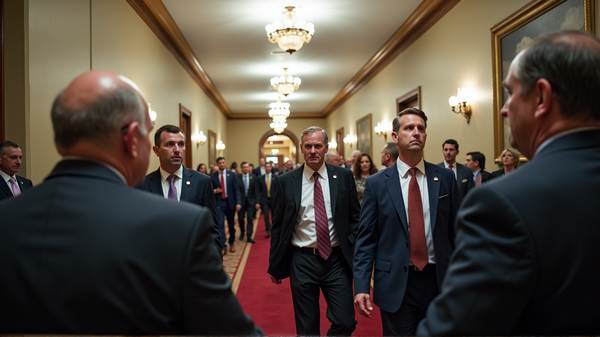Wall Street Freefall: Inflation Fears and Economic Slowdown Spook Investors

A turbulent Friday for Wall Street saw stock indices nosedive, as concerns over persistent inflation and an increasingly sluggish U.S. economy struck at the heart of investor confidence. The S&P 500 dropped an eye-watering 2%, marking one of its worst trading days in recent years and culminating in a string of losing weeks that has left traders fraught with anxiety.
Warnings from the Apparel Giants
Some of the sharpest declines were led by big names in the apparel sector. Lululemon Athletica’s stock plummeted by a staggering 14.2%, despite reporting earnings that surpassed expectations. The company’s cautionary outlook on future growth, driven by unfavourable economic conditions and inflationary pressures, left investors jittery. Similar anxieties were echoed by Oxford Industries, whose stock plunged by 5.7% amid reports of waning consumer confidence.
Big Tech Struggles
Adding to the doom and gloom, major tech players such as Apple and Microsoft saw significant declines. These giants have been central to Wall Street’s recent volatility, with critics pointing to overpriced stocks as their valuations far outpaced growth, particularly in the dynamic field of artificial intelligence. AZFamily.
Global Aftershocks
The tremors of Wall Street’s woes were felt globally. Japan and South Korea witnessed steep declines, exacerbated by recent announcements of forthcoming U.S. tariffs on automobile imports. Meanwhile, an unfortunate natural disaster in Myanmar sent Thailand’s markets reeling, contributing to a broader atmosphere of instability in Asian markets.
A Deeper Economic Trench
On the domestic front, consumers are growing more pessimistic, with surveys indicating heightened fears about the future job market and a potential slide into “stagflation”—a vicious mix of stagnant growth and rising prices. In a nail-biting turn, the yield on the 10-year Treasury bond also fell, highlighting concerns over both inflation and economic expansion.
As pressure mounts, both in the U.S. and abroad, markets are holding their breath in anticipation of President Trump’s “Liberation Day,” where new tariffs are set to further shake the status quo. The question remains whether corrective action, possibly in the form of interest rate cuts by the Federal Reserve, will provide a reprieve or merely fuel further inflationary woes.
The coming weeks will surely test the resilience of investors and economists alike, as they navigate through one of the most challenging periods on Wall Street in recent memory.





